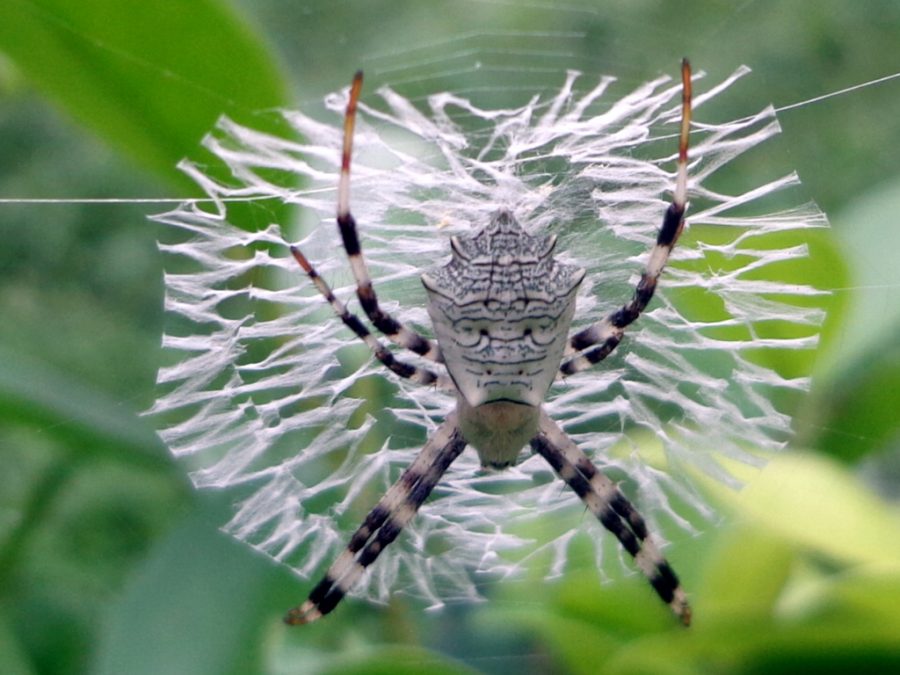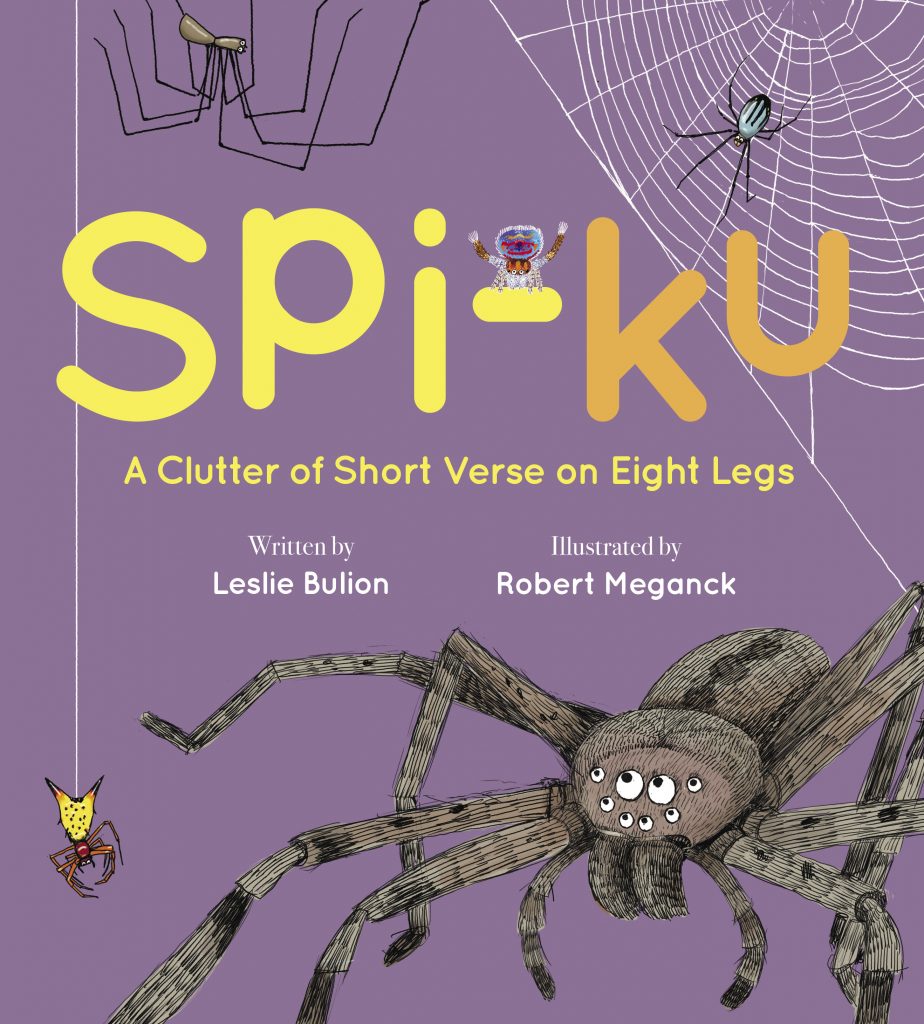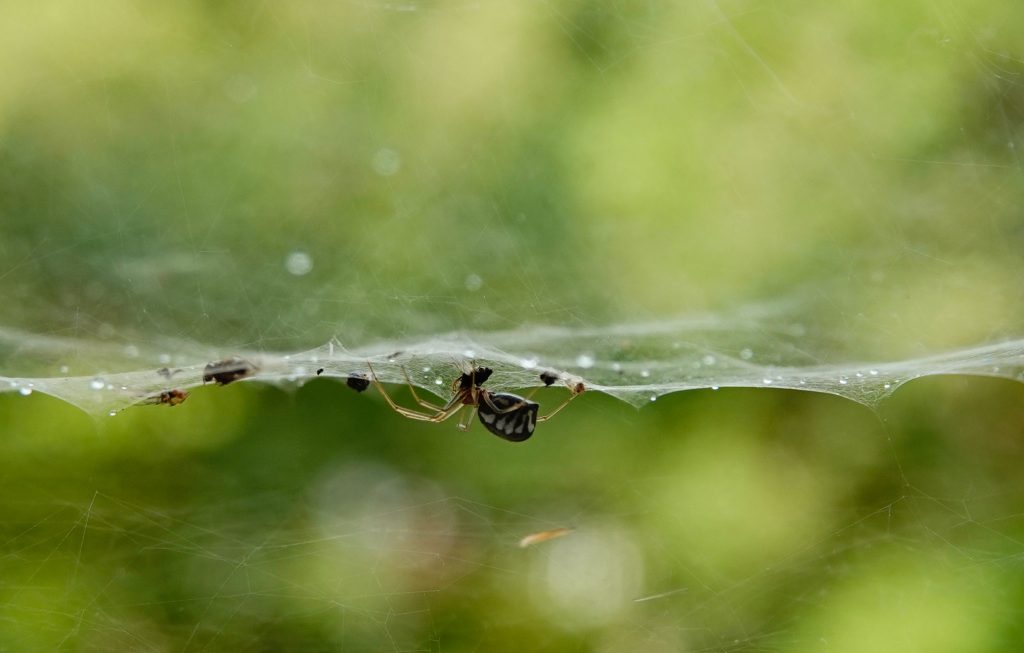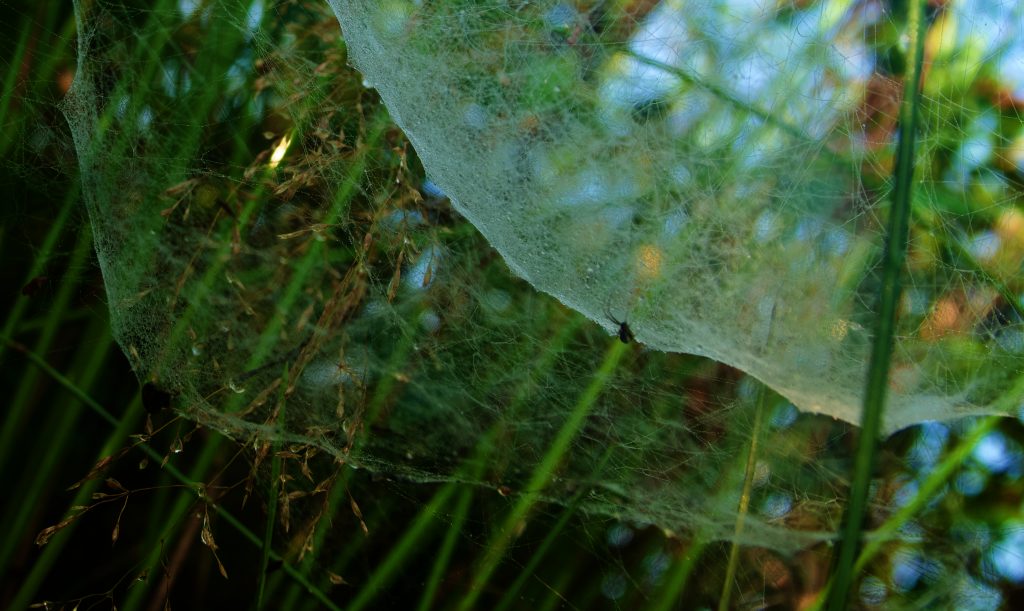
GUEST BLOGGER LESLIE BULION
A special Sunday edition of the popular LitLinks blog series
I’m always on the lookout for cool science stories, and the amazingly tricksy world of Araneae is filled with those! Spi-Ki: A Clutter of Short Verse on Eight Legs invites readers to explore the wide and varied 50,000-species spiderverse. Spread by spread, this themed poetry collection outlines “problems of spider daily living” such as locomotion, eating, avoiding being eaten, finding a mate, parental care, and more. Each two-page spread depicts three different species of spiders and their solutions to those problems—adaptations—using poems, expository notes, and illustrations.
When I write, I sift through my research notes to share one or two interesting ideas using a handful of carefully chosen words and phrases. These activities from the Spi-Ku Educator’s Guide help students with organization of information in research and writing, and provide students with a process to follow to write a science poem of their own. Activities for younger readers can be found at Peachtree-Online.com.
Text features that organize spider facts
- Spi-ku is organized into sections that highlight spider traits or characteristics.
- Ask students to name four section titles. (Table of Contents: Araneae All Around, Spectacular Silk, Worldwide Webbers, On the Prowl, Spider Mamas, etc.)
- Ask students to describe the subject, often a trait or characteristic of spider biology or behavior discussed in each section. (For example, how spiders make and use silk, different types of webs, hunting, caring for eggs/young, etc.)
- Most of the book’s sections highlight three different spider species to give examples of a particular trait or characteristic of spider biology and behavior.
- Ask students to find sections that don’t follow this three-spider pattern (introduction: “Araneae All Around”; anatomy diagram and taxonomy: “The World of Spiders”; “Food Prep, Mealtime, Leftovers”; conclusion: “Our Spiderful World”)
- Ask students to examine the illustrations on pages 6–7, 14–15, and 38–39. How can readers identify the spiders in these three “group” illustrations? Example: direction, page 7 (see page 42 “Araneae All Around” for spider identification)
- Ask students to examine the cover of Spi-ku. What do they notice about spiders from this illustration? Which spiders seem most interesting? Why?
- Which text features help readers look up and discover the identities of the cover’s spiders? (Table of Contents, back matter diagram on page 48)
Visual literacy: Find this spider!
- There is only one spider in Spi-ku that is not featured in a poem.
- Ask students to use what they’ve discovered about the book’s sections and organization in the Text Features Activity A to narrow down where they might look for this mystery spider. [Check spreads with group illustrations.]
- Ask students to read this species description on iNaturalist: https://www.inaturalist.org/ taxa/209810-Frontinella-pyramitela and look at the photos there and below to learn more about this beautiful and interesting web-weaving spider, then answer the following questions:
- What is the spider’s common name?
- How big/small is this spider?
- How would you describe the shape of this spider’s web?
- Make a list of fun, interesting, or powerful words that describe this spider, its web, and its behavior.
Poetry-writing activity: Create a Spi-ku haiku
- Ask students (with partners or on their own) to read aloud the page 41 description of the ancient Japanese poem form, the haiku.
- Ask students to take turns reading aloud each of the five haiku included in Spi-ku. After reading or listening to each poem, ask students to consider these questions:
- Does this poem fit the given description of a haiku?
- Does this poem describe a “moment in nature”?
- Discuss with a partner or with the class why, or why not?
- Ask students to choose one haiku from Spi-ku and make a list of fun, interesting, or powerful words they find in the poem.
- Using their bowl and doily spider information and their own power word lists, ask students to write a haiku about this spider. Or allow them to collect information about another spider they’re interested in and write about that one.
- Ask students to illustrate their poem.
Featured image credit: “writing spider” by dotun55 is licensed under CC BY-SA 2.0
Leslie Bulion creates award-winning science poetry steeped in hands-on learning experiences, field observations, research, humor and imagery in a variety of poetic forms. Her illustrated collections invite readers on multi-layered science adventures exploring birds, sea creatures, insects, amphibians, entire ecosystems, and even human anatomy. Leslie’s graduate science background and her years as a school social worker inform both her poetry and her science-infused novels for young readers. Check out her newest, Kirkus-starred, funny science poetry collection, SPI-KU: A CLUTTER OF SHORT VERSE ON EIGHT LEGS (Peachtree: March 1, 2021)!
Find Leslie here:
- www.lesliebulion.com
- Leslie Bulion on facebook https://www.facebook.com/leslie.bulion
- @LeslieBulion on Twitter https://twitter.com/LeslieBulion
- @LeslieBulion on Instagram https://www.instagram.com/lesliebulion/












Leave a Reply
Your email is safe with me.